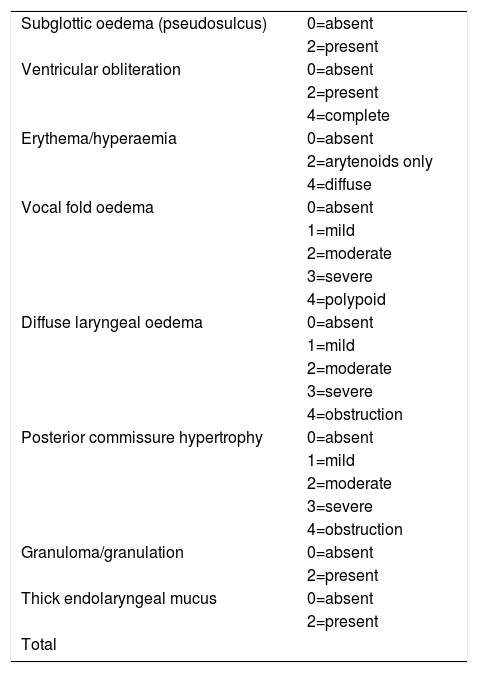Laryngopharyngeal reflux (LPR) is a disease characterized by the presence of symptoms, signs and tissue damage caused by retrograde flow of gastric contents to the upper aerodigestive tract. It represents up to 10% of otolaryngology consultations.
The aim of the study is to describe the findings obtained by applying the salivary pepsin test (PEP-test) in a sample of patients with the clinical suspicion of LPR.
Material and methodsOur descriptive clinical study included 142 subjects with symptoms suggestive of LPR and a score above 13 on the RSI scale. The subjects underwent laryngeal endoscopy to rule out other pathologies that could justify the symptoms and the salivary pepsin test (PEP-test). The latter was carried out on fasting subjects and a second test one hour after eating, only on those with negative results.
ResultsThe results obtained in the tests performed on the 142 patients included in the study were: 105 (73.94%) presented positive results in some of the salivary pepsin tests and the results of both tests were negative in 37 subjects (26.06%).
ConclusionThe salivary pepsin test is a simple, low-cost, non-invasive and easily repeatable tool which could minimize empirical treatments and invasive tests for LPR diagnosis, although further research is needed for its validation.
El reflujo faringo-laríngeo (RFL) es una enfermedad caracterizada por la presencia de síntomas, signos y alteraciones tisulares, consecuencia del movimiento retrógrado del contenido gastrointestinal hacia el tracto aerodigestivo superior. Representa hasta el 10% de las consultas en otorrinolaringología.
El objetivo de nuestro trabajo es describir los hallazgos obtenidos al aplicar el test de determinación de pepsina en saliva (PEP-test) en una muestra de pacientes con signos clínicos sugestivos de RFL.
Material y métodosEn nuestro estudio clínico descriptivo se han incluido 142 sujetos con síntomas sugestivos de RFL que obtuvieron puntuaciones por encima de 13 en la escala RSI. A todos ellos se les realizó una endoscopia laríngea para descartar otras enfermedades que pudieran justificar los síntomas y el PEP-test. Ésta se realizó en ayunas a todos los sujetos, y en aquellos con resultados negativos se realizó una segunda determinación una hora después de comer.
ResultadosLos resultados obtenidos en las pruebas realizadas en los 142 sujetos incluidos fueron los siguientes: 105 pacientes (73,94%) presentaron resultados positivos en alguna de las determinaciones de pepsina en saliva y en 37 sujetos (26,06%) los resultados de ambas determinaciones fueron negativos.
ConclusiónEl PEP-test es un método sencillo, económico, no invasivo y fácilmente repetible que podría minimizar el uso de tratamientos empíricos y pruebas invasivas para el diagnóstico del RFL, si bien son necesarias más investigaciones para la validación del mismo.
Artículo
Comprando el artículo el PDF del mismo podrá ser descargado
Precio 19,34 €
Comprar ahora









